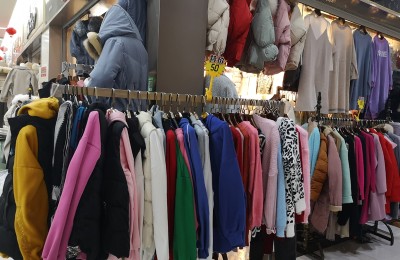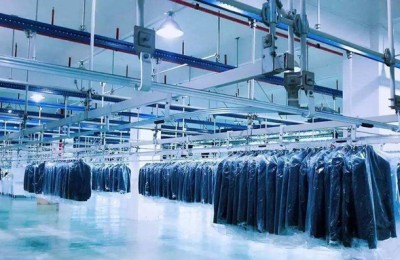Introduction to cotton and linen fabrics Types of cotton and linen fabrics
Introduction to cotton and linen fabrics, types of cotton and linen fabrics, cotton and linen refer to textiles made of cotton and linen as raw materials. Cotton and linen are both grown from temperate zone plants. The seeds of cotton and castor respectively are harvested and dried in the sun. After drying and machine threshing, the seeds and cotton and linen parts are decomposed, which are pressed by machines, woven into threads and cloth, and finally dyed to produce the finished product.
The Egyptians first discovered the use of flax fiber, which has a history of 8,000 years. China discovered the use of ramie as a textile raw material during the Neolithic period 4,000 years ago.
Category:
Cotton and linen wool polishing products refer to cotton (plant) and linen (plant) hair (animal hair) , made through manufacturing process and used for
polishing. Cotton and linen are both grown from temperate zone plants. The seeds of cotton and pyrene are harvested respectively, dried in the sun, and threshed by machines to decompose the seeds and cotton and linen parts. After being pressed by machines, they are woven into threads and cloth. After dyeing, the finished product is obtained. Italian craftsmanship is renowned.
Cotton fiber is a seed fiber formed by elongation and thickening of the epidermal cells of fertilized ovules. It is different from ordinary bast fiber. Its main component is cellulose. Cellulose is a natural polymer compound with the chemical structural formula (C6H10O5)n. The cellulose content of normal mature cotton is about 94%. In addition, it contains a small amount of polypentosides, waxes, proteins, fats, water-soluble substances, ash and other accompanying organisms. Because cotton fiber has many excellent economic properties, it has become the main raw material for the textile industry. Cotton fiber has high strength, good wrinkle resistance, but poor stretchability; it has good heat resistance, second only to linen; it has poor acid resistance and is resistant to dilute alkali at room temperature; it has good affinity for dyes, is easy to dye, and has a complete chromatogram. , the color is also brighter.
Bast fiber and leaf fiber are fibers obtained from various hemp plants, including bast fiber of the cortex of annual or perennial herbaceous dicotyledonous plants and leaf fiber of monocotyledonous plants. Bast fiber crops mainly include ramie, jute, green hemp, hemp (hemp), flax, apocynum and hone. Among them, ramie, flax, apocynum and other cell walls are not lignified, and the thickness and length of the fibers are similar to cotton. They can be used as textile raw materials to weave into various cool linen and linen cloths, and can also be blended with cotton, wool, silk or chemical fibers; Bast fibers such as jute and kenaf have lignified cell walls and short fibers, so they are only suitable for spinning ropes and packaging sacks. Leaf fibers are thicker and harder than bast fibers and can only be made into ropes and the like.
Hemp fiber is bonded into sheets by colloid. During production, the colloid must be removed to separate the fibers, which is called degumming. Ramie and flax can be separated into individual fibers. Jute fiber is short and can only be separated into fiber bundles of appropriate size for spinning. Such fiber bundles are called craft fibers. In hemp fiber used for textiles, there are more colloids and other cellulose companions. After refining, the cellulose content of hemp fiber is still lower than that of cotton fiber. The cellulose content of ramie fiber is close to that of cotton (more than 95%), the cellulose content of flax is slightly lower than that of ramie, and the cellulose content of jute and leaf fibers is only about 70% or less. The orientation degree of cellulose macromolecules in the cell walls of ramie and flax fibers is greater than that of cotton fibers, and the crystallinity is also better. Therefore, the strength of hemp fibers is higher than that of cotton fibers, up to 6.5 g/den; the elongation is small, only that of cotton fibers. Half, about 3.5%, brittle than cotton fibers. Ramie and flax fibers have smooth surfaces and are easier to absorb moisture, and the moisture dissipates into the atmosphere faster; the fibers are relatively straight and difficult to deform. The Egyptians have been using flax fiber for 8,000 years, and the shroud of the Egyptian mummies in the tomb is more than 900 meters long. China had adopted ramie as early as 4000 BC in the Neolithic Age
Keywords:
Cotton and linen fabrics Introduction to cotton and linen fabrics Types of cotton and linen fabrics
AA
Disclaimer:
Disclaimer: Some of the texts, pictures, audios, and videos of some articles published on this site are from the Internet and do not represent the views of this site. The copyrights belong to the original authors. If you find that the information reproduced on this website infringes upon your rights, please contact us and we will change or delete it as soon as possible.
AA




